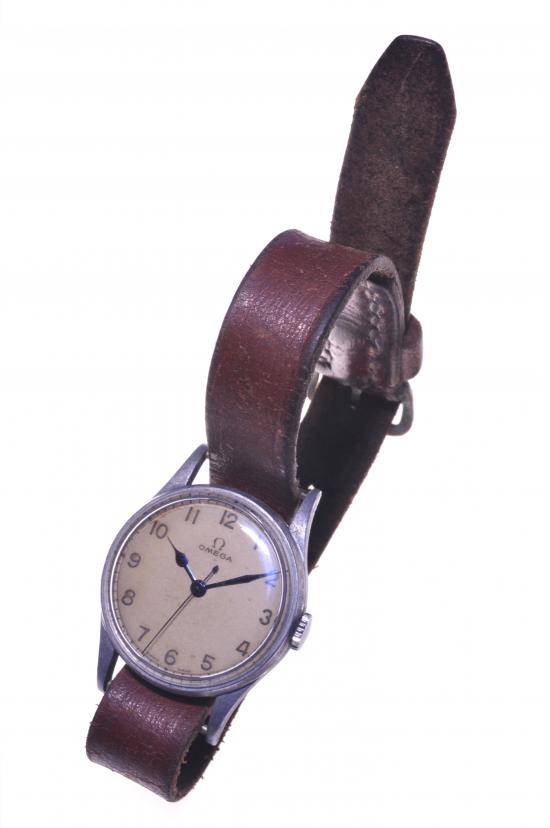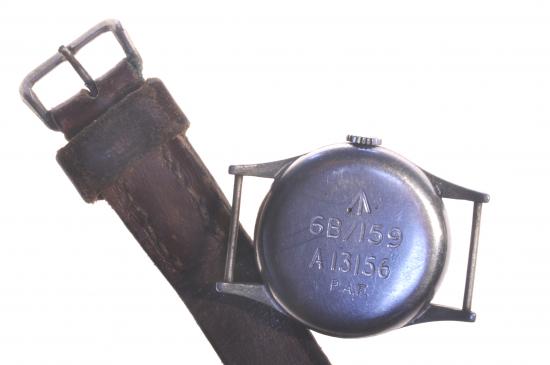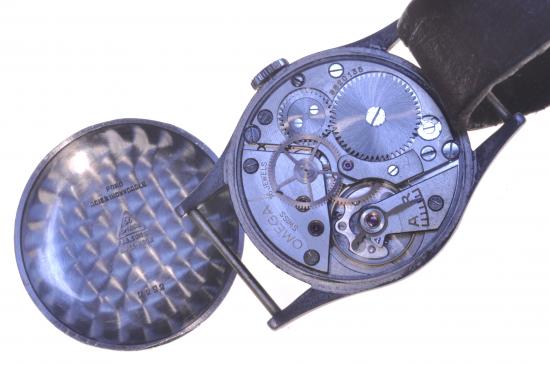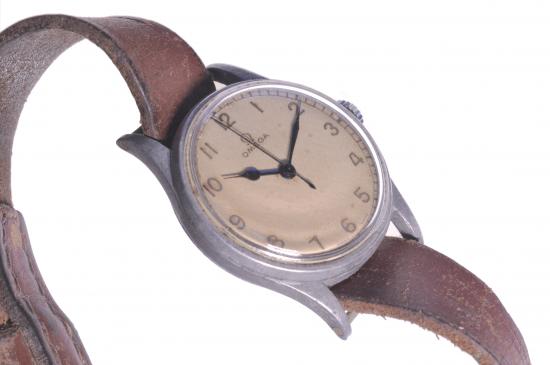WW2 Polish Air Force 6B Omega Wristwatch, c.1942
A very rare Polish Air Force marked 6B/159 Omega watch, in untouched, original condition.
At the start of WW2, when the first Polish airmen arrived in Britain, there was nothing they wanted more than to be allowed the chance to help destroy the Luftwaffe. They believed that the RAF would give them that opportunity, however, the Air Ministry was not convinced that the Polish pilots were up to the task. Yet, so desperate were the Poles, the Polish Government in Exile agreed to pay the British for leasing them air bases, aircraft and equipment, just so they could get back into the fight. This was how the PAF was formed and they assisted the RAF, operating under the Air Ministry's authority, however, the PAF had to pay monetarily for their continued existence - funds being made available from Polish gold reserves evacuated to Canada. Of course, there were Polish aircrews who came to Britain at the start of the war and enlisted directly into the RAF, they were not treated as PAF. PAF aircraft bore RAF roundels together with Polish checkerboards, their RAF uniforms had PAF insignia and their watches were marked to both airforces.
Confusingly, it has become popular in some quarters to declare that "PAF" is the sole acronym for the Pakistan Air Force. Well, this is not accurate. There were in fact at least two PAFs; the first, as stated, during WW2, was the Polish, which was followed in 1947 by the formation of the RPAF - "Royal Pakistan Air Force". Only after the "Royal" title was dropped in 1959, did they adopt the title, Pakistan Air Force. At this time Pakistan had on order from Omega, "Seamaster" watches and indeed, they were marked to the PAF but their marking was very differently applied. If the doubters think about it, what is being said by them is that the Pakistani Air Force issued their newly named air force with WW2 surplus RAF 6B watches that they marked "PAF" in 1959 concurrently with the new Seamaster watches but they opted to use a hand operated graver on the WW2 batch and then went posh and used a milling engraver for the Seamasters, and lets not forget the surplus WW2 GSTP watches that were additionally marked with their Broad Arrow "P" mark, but using the same quality tooling. Only it is my submission that the Poles in WW2 used a rudimentary engraver and all their owned pilots' watches share that same crude quality of marking.
The Omegas Seamaster PAF watches and others since, have been decently engraved or impressed, but the Polish PAF watches were hastily marked. Much like a soldier would add his name to his army kit to stop it from getting lost or stolen. So why wasn't all property marked? Well, perhaps because watches are inherently desirable and valuable.
No, the Polish Air Force (who were known as the "PAF" during WW2) added their details to their stock of RAF coded watches. So, why did they feel the need to put their mark in English? They did it because they were obliged to pay the Air Ministry for all the equipment they used. Uniforms, aircraft, offices, Buildings, the lot.
It has also been stated that if ther Poles marked their kit, why didn't the RNZAF, RAAF, SAAF and RCAF mark theirs similarly? Well, those are Commonwealth Nations. The Air Ministry owns the equipment they loaned the Commonwealth, but as for the Polish Government, they paid for it, so it ceased to belong to the British and had to be marked as PAF. As far as the PAF were concerned, the Air Ministry were the supplier, while the PAF were the customer. Surely it's not difficult to accept that most of us have added our names to a valuable item to prevent another person from claiming it was theirs. Yet, this doesn't seem easy to comprehend and many still claim that the WW2 Polish 6B watches are Pakistani Air Force. Well, that does a disservice to both PAFs. Interestingly, watches that were gifted to the Pakistani military post 1947, they engraved with a Broad Arrow with a "P" beneath it.
Presented in full working order, this Omega watch is in particularly fine and original condition, with superb age patina and a solid, tight-fitting case, plus, what is probably the original long leather strap, which could have been wrapped around the pilot's glove. All still serviceable and working well, having been recently serviced by the former owner - although no warranty implied.
These gems don't turn up often, let alone in museum grade condition.
Code: 51275





